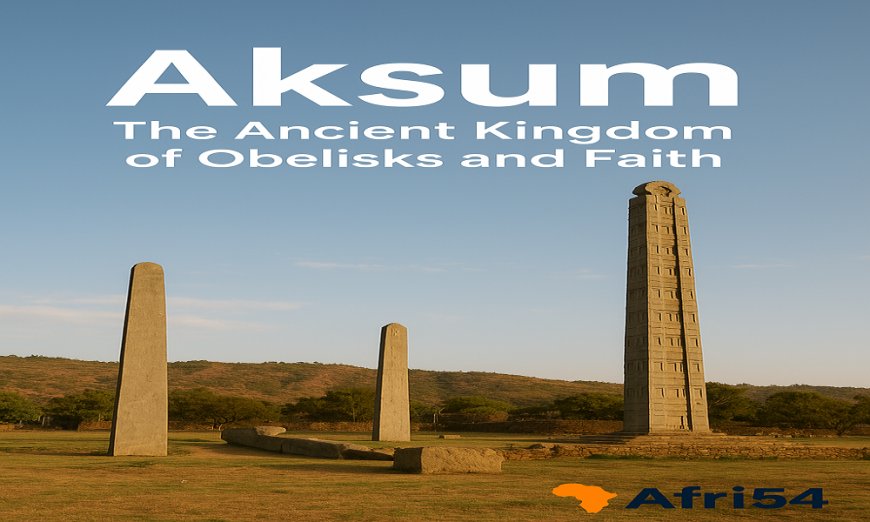Aksum: The Ancient Kingdom of Obelisks and Faith
Discover Aksum, the ancient Ethiopian kingdom famed for its towering obelisks, rich trade networks, and role as one of the earliest Christian states in the world.

Reading Time: ~6 minutes
High in the northern Ethiopian highlands lies the ancient city of Aksum, once the beating heart of the Aksumite Kingdom. Flourishing between the 1st and 7th centuries CE, Aksum was one of Africa’s greatest civilizations, renowned for its monumental stone obelisks, rich trade networks, and early embrace of Christianity.
The Rise of the Aksumite Kingdom
Aksum emerged as a dominant power in the Horn of Africa around the 1st century CE. Its strategic position between the Red Sea and the Nile Valley made it a hub of international trade. Goods such as ivory, gold, frankincense, and exotic animals flowed out of Aksum, while imports from Rome, India, and Arabia filled its markets.
Roman and Persian sources described Aksum as one of the world’s great empires, alongside Rome, Persia, and China. This recognition highlights the kingdom’s influence across continents.
The Towering Obelisks of Aksum
The city’s most iconic legacy is its massive stone stelae (obelisks), some reaching over 30 meters in height. These monolithic structures were carved from single blocks of granite and served as funerary monuments for Aksumite rulers and elites.
The Obelisk of Axum, standing at 24 meters, remains one of Ethiopia’s most treasured monuments. Its intricate carvings resemble multi-story buildings, complete with doors and windows, showcasing the Aksumites’ architectural ingenuity.
Aksum and Christianity
In the 4th century CE, under King Ezana, Aksum became one of the earliest states in the world to officially adopt Christianity. Missionaries from the Eastern Mediterranean played a key role in this conversion, and the faith became deeply rooted in Ethiopian culture.
Aksum is also linked to biblical traditions. Ethiopian Christian lore associates it with the Queen of Sheba, and some traditions claim that the Ark of the Covenant rests within the Church of St. Mary of Zion in Aksum — a site still revered today.
Decline of Aksum
By the 7th century, shifts in trade routes and the rise of Islamic powers along the Red Sea weakened Aksum’s dominance. Gradually, the kingdom’s influence waned, though its cultural and religious legacy endured, laying the foundation for the Ethiopian Christian tradition that thrives to this day.
Aksum Today
Today, Aksum is recognized as a UNESCO World Heritage Site. Visitors explore its stelae fields, royal tombs, and ancient churches, stepping into a city that once stood among the world’s great empires.
Why Aksum Matters
Aksum is more than ruins and relics. It represents Africa’s power, innovation, and spiritual heritage. Its obelisks testify to unmatched engineering skills, while its adoption of Christianity places it at the crossroads of global religious history.
Final Thoughts
To walk among the obelisks of Aksum is to witness a civilization that combined artistry, trade, and faith. It is a reminder that Africa has long stood at the center of global history — a continent of innovation, spirituality, and resilience.
Have you listed your business on Afri54?
Afri54 exists to solve a fundamental challenge faced by millions of African businesses: lack of visibility. Whether you’re an automobile part seller in Lagos, a local attire manufacturer in Kigali, a coffee exporter in Addis Ababa, or a mobile phone supplier in Accra, you deserve to be seen. Join Now


















